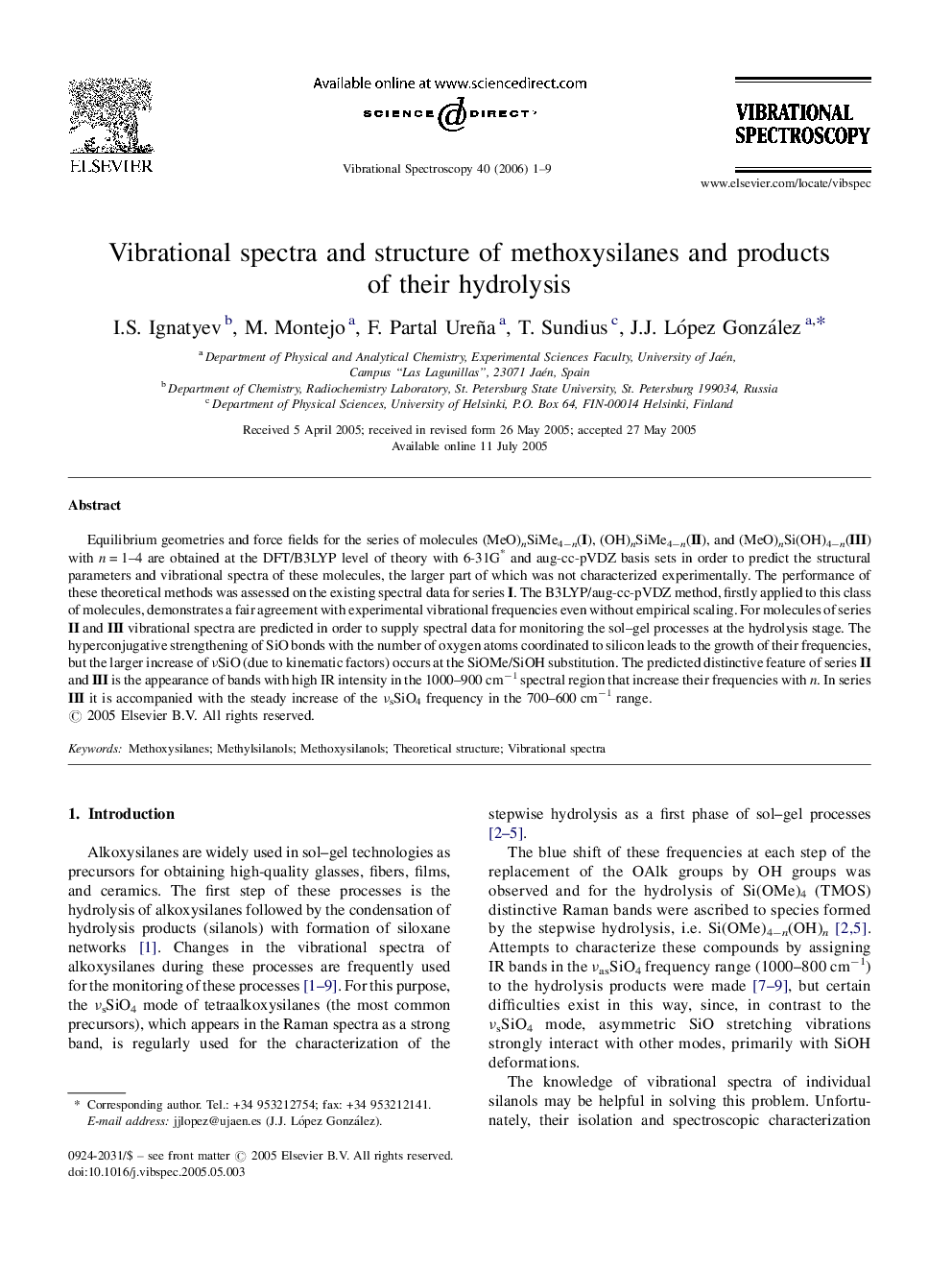| Article ID | Journal | Published Year | Pages | File Type |
|---|---|---|---|---|
| 1251199 | Vibrational Spectroscopy | 2006 | 9 Pages |
Equilibrium geometries and force fields for the series of molecules (MeO)nSiMe4−n(I), (OH)nSiMe4−n(II), and (MeO)nSi(OH)4−n(III) with n = 1–4 are obtained at the DFT/B3LYP level of theory with 6-31G* and aug-cc-pVDZ basis sets in order to predict the structural parameters and vibrational spectra of these molecules, the larger part of which was not characterized experimentally. The performance of these theoretical methods was assessed on the existing spectral data for series I. The B3LYP/aug-cc-pVDZ method, firstly applied to this class of molecules, demonstrates a fair agreement with experimental vibrational frequencies even without empirical scaling. For molecules of series II and III vibrational spectra are predicted in order to supply spectral data for monitoring the sol–gel processes at the hydrolysis stage. The hyperconjugative strengthening of SiO bonds with the number of oxygen atoms coordinated to silicon leads to the growth of their frequencies, but the larger increase of νSiO (due to kinematic factors) occurs at the SiOMe/SiOH substitution. The predicted distinctive feature of series II and III is the appearance of bands with high IR intensity in the 1000–900 cm−1 spectral region that increase their frequencies with n. In series III it is accompanied with the steady increase of the νsSiO4 frequency in the 700–600 cm−1 range.
